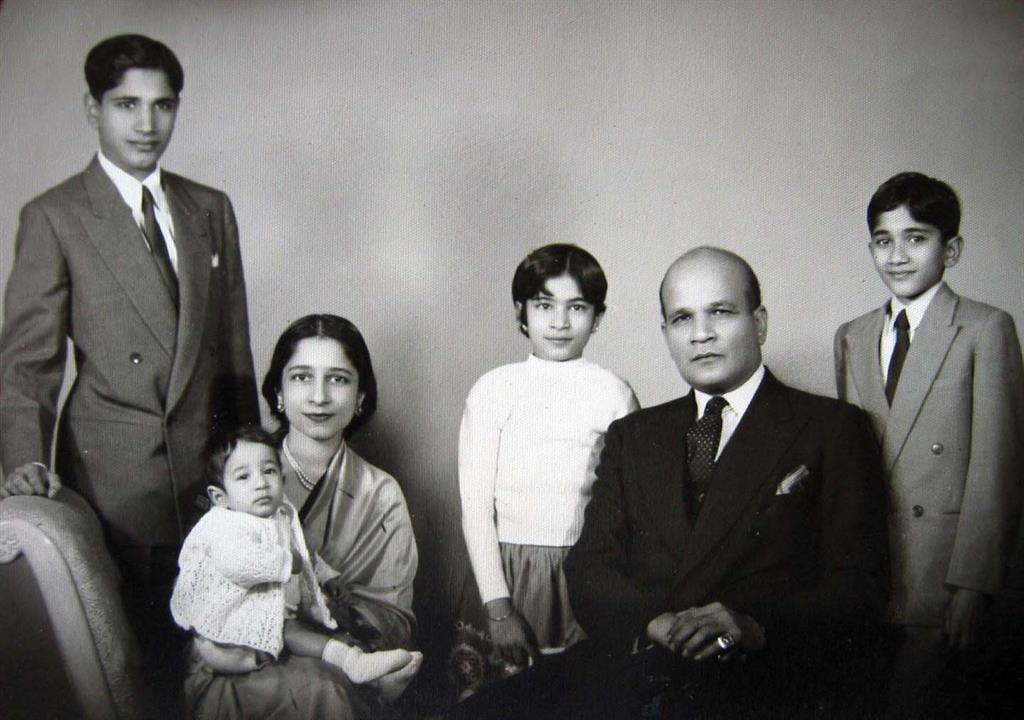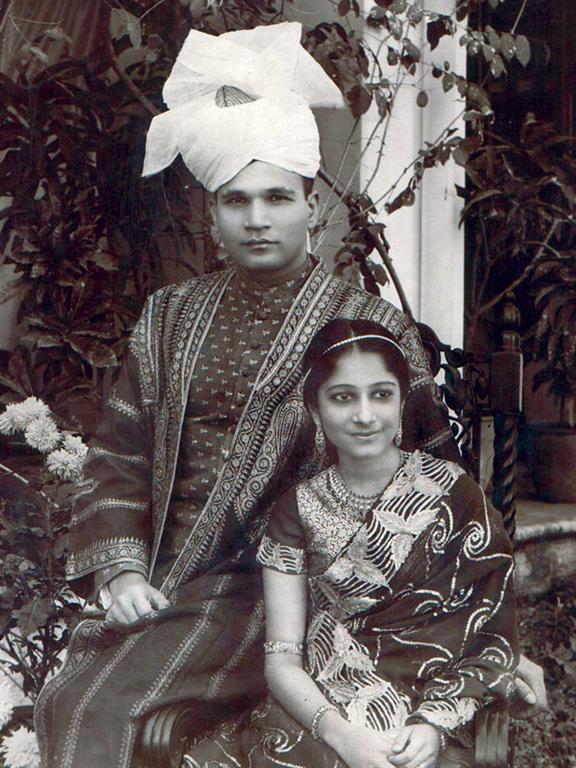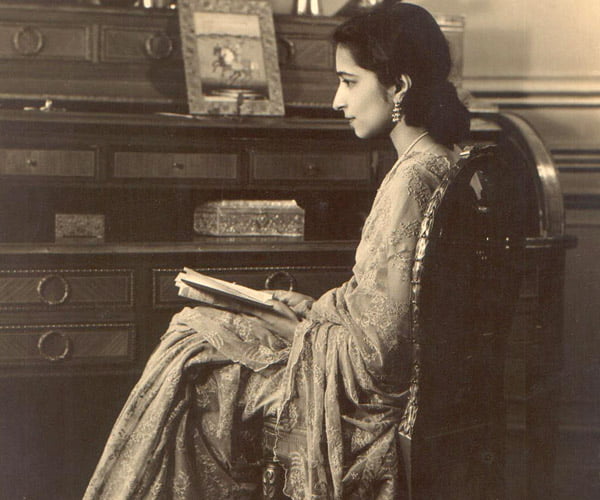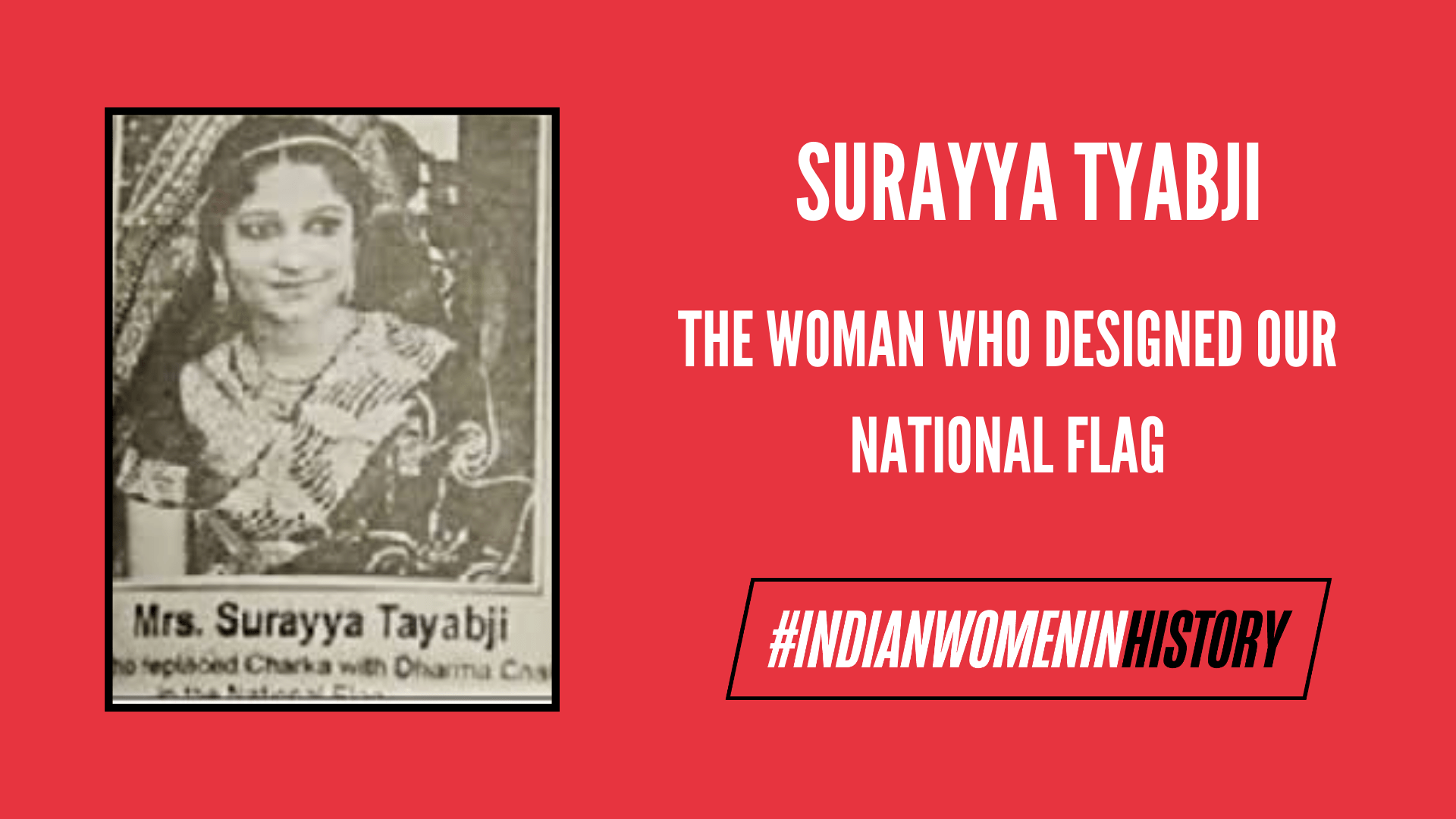The pages of Indian history are unlimited and vast. A simple look at it and one can see thousands of names who have fought for independent India and contributed to it from every sphere of life. However, there are many pages of this history that are often overlooked and the names are forgotten. One such name is Surayya Tyabji – the woman who came up with the final design of our national flag.
Pingali Venkayyah has always been regarded as the man who came up with the design of our Indian flag. Contrary to popular belief, while the idea for the flag developed through the years with many names contributing to it, Pingali, in fact, was a designer of the Swaraj Flag of the Indian National Congress. Surayya Tyabji was the one who came up with the final idea for the Indian flag but was never credited for it. It’s high time we recognise her contribution and give her the credit that she deserves.
Early Life
Born and brought up in Hyderabad (Andhra Pradesh, now capital of Telangana) in 1919, Surayya Tyabji was a reputed artist who was known for her uncustomary and progressive outlook on life and society. Remembering her, Laila Tyabji, daughter of Surayya and Badruddin Tyabji writes, “If she had to choose a representative image for herself, it wouldn’t have been that carefully composed picture of an ambassadorial wife that was up in that exhibition. She’d probably have chosen one of her escaping into her own private world of painting or even the one climbing the high rocks of Hyderabad, her sari tucked up to her knees. She was the kind of Muslim woman people don’t talk about because she didn’t fit either the docile voiceless burkha-clad stereotype or the fiery activist one. My family had plenty of the latter, though mercifully none of the former. But, in her own way, Amma was also a pathbreaker.“

Surayya Tyabji was married to Badruddin Tyabji who was an Indian Civil Servant and later served as the Vice Chancellor for the Aligarh Muslim University. She was a member of various committees under the Constituent Assembly and has played major roles in many of them. Artistic and multi-talented, she painted, cooked, sewed, rode, swam and managed the family investments.

The initial Controversy
Trevor Royle, an English historian in his book The Last Days of The Raj wrote about how the national flag that we know of today came into existence on July 17, 1947. He wrote, “By one of those contradictions which run through India’s history, the national flag was designed by a Muslim, Badh-ud-Din Tyabji. Originally the tricolour was to have contained the spinning wheel symbol (charkha) used by Gandhi but this was a party symbol, which Tyabji thought might strike the wrong note. After much persuasion, Gandhi agreed to the wheel because Emperor Ashoka was venerated by Hindus and Muslims alike. The flag which flew on Nehru’s car that night had been specifically made by Tyabji’s wife.”
According to Trevor Royale, it was Badruddin Tyabji who came up with the idea of the final design of the flag. However, Capt. L Panduranga Reddy, a historian from Hyderabad, argued through his research that it was indeed Surayya Tyabji and not her husband who designed the final tricolour. While thorough research of the Constituent Assembly of India debates shows the documents and names of the members of the flag presentation committee where Surayya Tyabji is indeed mentioned, it is disheartening how her contribution has been completely disregarded and erased from our history.
The Tricolour
After the Partition of 1947, the constituent assembly was submerged with the mammoth task of figuring out every detail about the working of a new nation. A new nation was going to be formed with a population of over 300 million. This is when the realisation dawned on everyone that we didn’t have a National Emblem. A country’s National Emblem represents authority and its constitutional philosophy. Hence, for India, the National Emblem was of utmost importance to showcase its long-due Independence from the British colony and take its first step toward being a Republic. Badruddin Tyabji was allotted the responsibility of coming up with a design for our National Emblem by Jawaharlal Nehru.
Also read: These Are The 15 Women Who Helped Draft The Indian Constitution
While hundreds of designs poured in from different parts of the country, most of them were highly influenced by the British Emblem. While the efforts for designing the National Emblem were still in process, it was implicit that the Swaraj Flag of the Indian National Congress designed by Pingali Venkayyah would be the National Flag with Gandhiji’s Charkha (sewing machine) positioned at the centre.
It was then that Badruddin Tyabji and Surayya Tyabji came up with the design of lions and the Ashoka Chakra for the Emblem. Remembering the time, their daughter Laila Tyabji writes, “So, my mother drew a graphic version and the printing press at the Viceregal Lodge (now Rashtrapati Niwas) made some impressions and everyone loved it. Of course, the four lions (Lion Capital of Ashoka) have been our emblem ever since.” She further says, “My mother was 28 at the time. My father and she never felt they had ‘designed’ the national emblem – just reminded India of something that had always been part of its identity.“
“She was the kind of Muslim woman people don’t talk about, because she didn’t fit either the docile voiceless burkha-clad stereotype or the fiery activist one.”
Once the Emblem was designed, opposition to a party flag representing the entire nation broke loose and the Tyabjis were again handed the responsibility of coming up with a new design for the flag. Laila Tyabji explains how the Ashoka Chakra paved way for the National Flag. “They took the same Ashoka Chakra and put it on the tricolour. Once it was done, it all seemed so natural and obvious. Originally, my mother had painted a black chakra, but Gandhiji objected, so it became navy blue.“
Surayya Tyabji supervised the sewing of the very first flag which later that night was presented to Jawaharlal Nehru. That was the very first time the tricolour flew – that night on Jawaharlal Nehru’s car, as Badruddin Tyabji watched the car go over Raisina Hill. The flag was then unanimously accepted on 22nd July.

Laila Tyabji has mentioned that neither Surayya nor Badruddin ever claimed creative ownership over the design of the flag but also remembers that it was Surayya who had specified the fabric and exact shades of the tricolour and cringed at the distorted colours used all over the country. “I don’t think she and my father ever publicly claimed creative ownership – the design of the flag was a development of the Congress party tricolour created by Pingali Venkayya, and the emblem was inspired by the lions on the Ashoka pillar, a period of Indian aesthetic and history they adored. The chakra they used to replace the spinning wheel on the Congress flag came from the same source. The only time I remember Amma referring to it was when she cringed at the distorted colours of Indian flags up and down the country and recalled how carefully, in those pre-Pantone shade-card days, she had specified both the fabric and exact shades.“
The contribution of Surayya Tyabji has been overlooked for a long. She is not only responsible for the tricolour that symbolizes sacrifice, purity and growth, but was also a major part in designing the National Emblem which beautifully showcases courage and unity. Despite being such an important part of Indian history, her role has rarely been acknowledged.
Also read: Fathema Ismail: A Crusader Against Polio | #IndianWomenInHistory
Featured Image Credit: ScoopWhoop
About the author(s)
Suman is a Law Graduate from HNLU and has completed her LL.M. with a specialization in Human Rights from Amity University. Her interest areas are Gender equality, LGBT rights and Refugee Laws. Bit of an Otaku who has learned most of her life lessons from Anime. FYI, she laughs when she is uncomfortable.





Surayya Tyabji born in Hyderabad state not Andhra Pradesh ap formed in Nov 1956 by merging two different Telugu states hyderabad and Andhra state
This is utter nonsense ! It is clearly mentioned in indian govt records who designed indian flag. Pls check your facts correct before writing fake news !
This is untrue. You are spreading false information and that too about such serious topics.